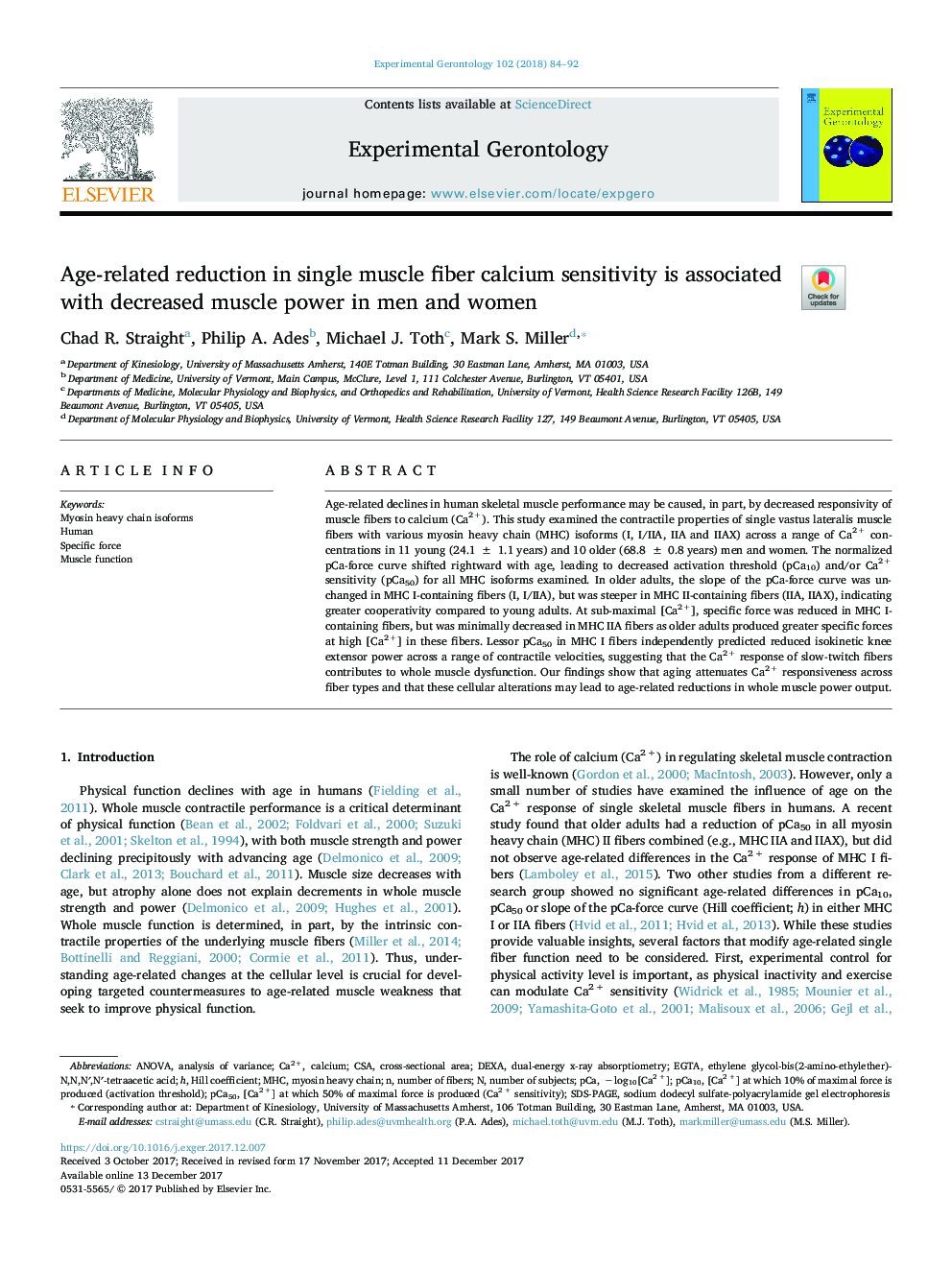| Article ID | Journal | Published Year | Pages | File Type |
|---|---|---|---|---|
| 8262593 | Experimental Gerontology | 2018 | 9 Pages |
Abstract
Age-related declines in human skeletal muscle performance may be caused, in part, by decreased responsivity of muscle fibers to calcium (Ca2+). This study examined the contractile properties of single vastus lateralis muscle fibers with various myosin heavy chain (MHC) isoforms (I, I/IIA, IIA and IIAX) across a range of Ca2+ concentrations in 11 young (24.1 ± 1.1 years) and 10 older (68.8 ± 0.8 years) men and women. The normalized pCa-force curve shifted rightward with age, leading to decreased activation threshold (pCa10) and/or Ca2+ sensitivity (pCa50) for all MHC isoforms examined. In older adults, the slope of the pCa-force curve was unchanged in MHC I-containing fibers (I, I/IIA), but was steeper in MHC II-containing fibers (IIA, IIAX), indicating greater cooperativity compared to young adults. At sub-maximal [Ca2+], specific force was reduced in MHC I-containing fibers, but was minimally decreased in MHC IIA fibers as older adults produced greater specific forces at high [Ca2+] in these fibers. Lessor pCa50 in MHC I fibers independently predicted reduced isokinetic knee extensor power across a range of contractile velocities, suggesting that the Ca2+ response of slow-twitch fibers contributes to whole muscle dysfunction. Our findings show that aging attenuates Ca2+ responsiveness across fiber types and that these cellular alterations may lead to age-related reductions in whole muscle power output.
Keywords
Related Topics
Life Sciences
Biochemistry, Genetics and Molecular Biology
Ageing
Authors
Chad R. Straight, Philip A. Ades, Michael J. Toth, Mark S. Miller,
